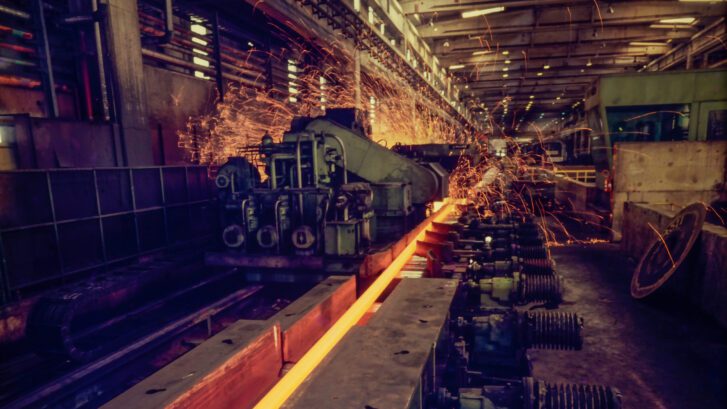Steel production is a key part of modern industry. But the process is far from simple. Amid the noise of furnaces, rollers, and cutting lines, there is always a risk of things going wrong. One vivid example is the “spaghetti failure.” This term, along with issues like mill cobbles and missrolls, describes some of the worst problems in rolling and casting operations. These failures not only put workers in danger but also stop production. So, it’s important to understand what causes them and how to prevent them.
A “spaghetti failure” happens when red-hot steel escapes from its proper path during casting or rolling and twists all over the floor, looking like a pile of spaghetti. This dramatic event is more than just a mess — it’s dangerous, expensive, and a sign of deeper problems.
These failures usually happen in continuous casting machines, hot rolling mills, and wire rod mills. In these areas, molten steel or semi-finished products can veer off their paths because of mechanical breakdowns or control errors.
Clearly, a spaghetti failure is more than a messy problem. It can break machines, cause serious injuries, delay work for hours or even days, and need a long cleanup.
In a different case, a mill cobble happens when a hot steel bar doesn’t pass smoothly through the rolling stand. Instead, it twists, bends, and whips around — once again, looking like spaghetti.
Cobbles often start because of speed mismatches between rolling stands, steel buckling from temperature changes, broken guides or rolls, or faulty sensors.
These events waste material, damage machines, put people at risk, and shut down lines. That makes cobbles not just costly, but also very dangerous.
Likewise, a missroll is when a steel product doesn’t shape correctly. This might be because the process was interrupted or not done right. As a result, the steel may bend, break, or be unfinished.
Common reasons for missrolls include poor mill setup, human mistakes, worn parts, sudden load changes, or uneven heating or cooling.
Missrolls hurt product quality, increase waste, and block the rest of the process.
Even though spaghetti failures, cobbles, and missrolls are different, they often come from the same kinds of problems. These include misaligned equipment, control system issues, bad material feeds, speed mismatches, faulty cooling, and worn guides or rolls.
To stop these failures, mills should keep machines well-tuned, use live monitoring, install smart control systems, train staff well, and make sure raw materials are high quality.
Taking care of machines means checking and tuning rollers often, swapping out worn parts, and keeping things well-oiled. Also, routine checks help catch small issues before they grow.
Real-time monitoring tools like thermal cameras, high-speed video, and AI-based systems help spot trouble early. These tools find problems that older systems might miss.
In addition, automatic control systems react fast. Using modern PLCs and closed-loop feedback can keep the process smooth and cut down mistakes.
Staff training is also key. Workers should know how to spot early signs of trouble and how to shut things down safely. Training with simulations can help them prepare for emergencies.
Using steel bars and blocks that meet tight size and quality standards helps keep things steady. Also, tracking material with barcodes or RFID tags helps trace problems faster.
Good design also helps. Strong guides and flexible rolling setups lower the chance of errors. Adding cobble catchers or shields can also limit damage if something goes wrong.
Real-world examples show how serious these problems can be. In one case, a software freeze caused a spaghetti failure in a European mill. In another, a mold crack in an Asian plant led to molten steel leaking out. Elsewhere, a small missroll turned into a full cobble because of poor monitoring.
Because of this, safety tools like remote control areas, blast barriers, emergency stop systems, and heat-resistant gear are vital. Regular safety drills also keep workers ready.
These failures cost more than scrap. They can cause lost money, injuries, delays, broken equipment, and damage to a company’s reputation.
Looking ahead, the answer is smarter, safer mills. Digital twins, smart maintenance systems, AR tools, and robots are changing how problems are found and fixed.
To sum up, spaghetti failures, cobbles, and missrolls are serious problems. But with the right tools, training, and care, they can be avoided. The steel industry is moving toward a safer future where these issues are rare, not common.


